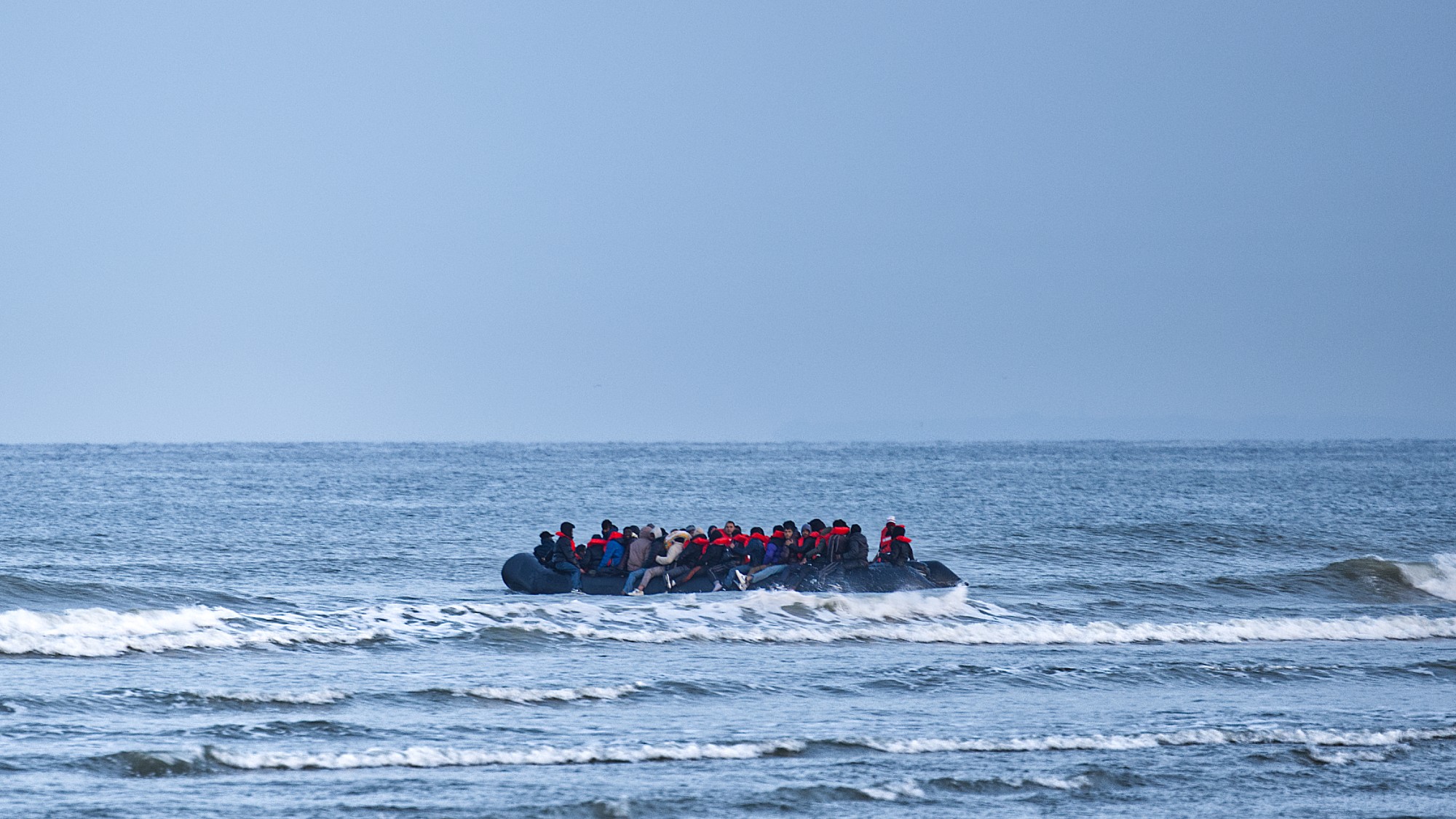The tragedy of Mount Everest
What was once impossible is now a tourist attraction — and the consequences have been deadly


When asked in 1923 why one would aspire to climb Mount Everest, English mountaineer George Leigh Mallory uttered three immortal words: "Because it's there."
For decades, the challenge presented by Everest's mere existence as the world's highest peak has been the career-capping allure for hundreds of professional climbers. It was also, presumably, the allure for the at least 11 climbers who have tragically died on the mountain this season, marking Everest's deadliest year since an avalanche killed 21 people at Base Camp in 2015. Even Mallory, despite his lofty 1923 retort, was destined to become one of the hundreds to perish on the mountain in pursuit of the dream of standing on top of the world.
Conditions on Everest today, though, would be unrecognizable to Mallory — or to the Sherpa Tenzing Norgay and his client, Sir Edmund Hillary, who together became the first recorded people to summit the mountain on this day in 1953. While Everest's danger once lay in the mountain being one of the most remote and inhospitable places on Earth, its threat today is of the opposite sort: its accessibility.
The Week
Escape your echo chamber. Get the facts behind the news, plus analysis from multiple perspectives.

Sign up for The Week's Free Newsletters
From our morning news briefing to a weekly Good News Newsletter, get the best of The Week delivered directly to your inbox.
From our morning news briefing to a weekly Good News Newsletter, get the best of The Week delivered directly to your inbox.
When Hillary and Norgay reached the crest of Everest 66 years ago today, they were the ninth British mountaineering expedition to attempt a first ascent. "Both Tenzing and I thought that once we'd climbed the mountain, it was unlikely anyone would ever make another attempt," Hillary told National Geographic Adventure on the ascent's 50th anniversary in 2003. "We couldn't have been more wrong." This year, Nepal issued a record 381 climbing permits, a number that does not include those climbers' accompanying guides. Yet despite years of criticism over the mountain's overcrowding, Everest tourism remains a $100 million industry for Nepal and "we are not in a position to give Everest a rest," the general secretary of the governing Nepal Mountaineering Association explained to The Guardian in 2015. "We will be missing out on royalties. We can't afford that."
The presence of so many thrill-seekers led Norgay's son, Jamling Tenzing Norgay, to say that climbing on Everest had "lost its spirit of adventure." As if to illustrate his point, in 2014 a Chinese national was accused of using a helicopter to assist in her ascent, opening up scrutiny of the motives of so-called "pseudo-mountaineers." Sketchy climbing companies and opportunistic guides also balloon the number of inexperienced climbers on the mountain, offering ambitious tourists a chance to reach the summit so long as they can pay the price.
To be clear, not all of the deaths on Everest this year have been due to overcrowding; summiting Everest is still an incredible challenge even for the most experienced climbers. This year's narrow window of good weather resulted in limited opportunities for a safe climb, though, exacerbating the number of people on the route at any given time. Some "were simply not fit enough to be on the mountain in the first place," reported The New York Times, while "[other] climbers did not even know how to put on a pair of crampons." As Alan Arnette, who has summited Everest four times, explained at Outside: "Crowds, while not the only reason people die on Everest, slow a climber's pace and thus increase their fatigue and use of oxygen." That has proven deadly on Everest, where the 2019 route has been described as a "zoo," a "scene reminiscent of Lord of the Flies," and an "anxiety-inducing conga line."
Incredibly, there are no requirements for training hours or passing any sort of physical wellness examine in order to obtain an Everest climbing permit. "You have to qualify to do the Ironman but you don't have to qualify to climb the highest mountain in the world? What's wrong with this picture?" is how Arnette put it to the Times. China is alone in having enacted strict requirements for its nationals, including summiting another "eight-thousander" ahead of attempting Everest from the Tibet side. Some experienced climbers have also proposed sweeping changes to Everest's management, including expanding the climbing season in order to better space out ascents, more strictly maintaining and regulating routes and guides, and putting a hard and low cap on the number of people on the mountain in a given season.
A free daily email with the biggest news stories of the day – and the best features from TheWeek.com
In many respects, it has actually never been safer to climb Everest "primarily due to better gear, weather forecasting, and more people climbing with commercial operations," Arnette (the preeminent go-to on all things Everest-related) told National Geographic. The danger, as 2019 has shown, is in its popularity among the unprepared, who make it dangerous for everyone else on the route. Everest "has become largely detached from the rest of climbing and mountaineering," observed The Guardian's Peter Beaumont. "It has become a trophy experience, drawing too many otherwise without much interest in the sport, validated by media coverage that sees Everest as being endlessly 'conquered' rather than passé."
Importantly, the rise in Everest tourism takes a disproportionate toll on Sherpas. The Nepalis make up the overwhelming number of Everest casualties when it comes to deaths related to the extreme tourism industry. "If, say, 1 percent of American college-aged raft guides or ski instructors were dying on the job — the mortality rate of Everest Sherpas — the guiding industry would vanish," Grayson Schaffer wrote in 2014 after the horrific death of 16 Sherpas in an avalanche. "But Himalayan climbing is understood to be extremely dangerous, and people who play the game still cling to its romantic roots in exploration rather than its current status as recreational tourism."
A true mountaineer, it has been said, "delights not in climbing this hill or that, but in climbing itself." But with Everest more temptingly there than ever before, some can't resist the shortcut through years of dedicated training afforded to them by money. That access is what makes the mountain more dangerous, both to the unexperienced climbers who clog the routes and to the local porters whose lives are dedicated to helping them up. Until more people stop climbing Everest, though, the tragic state of the mountain and Himalayan extreme tourism industry is doomed to continue.
"It is not the mountain we conquer but ourselves," Edmund Hillary once famously said. Only now, with grim irony, might we realize how right he was.
Jeva Lange was the executive editor at TheWeek.com. She formerly served as The Week's deputy editor and culture critic. She is also a contributor to Screen Slate, and her writing has appeared in The New York Daily News, The Awl, Vice, and Gothamist, among other publications. Jeva lives in New York City. Follow her on Twitter.
-
 Phish food for thought: Ben & Jerry’s political turmoil
Phish food for thought: Ben & Jerry’s political turmoilIn the Spotlight After a landmark demerger by Unilever, spinning off their ice cream brands, a war of words over activism threatens to ‘overshadow’ the deal
-
 Magazine solutions - December 12, 2025
Magazine solutions - December 12, 2025Puzzles and Quizzes Issue - December 12, 2025
-
 ECHR: is Europe about to break with convention?
ECHR: is Europe about to break with convention?Today's Big Question European leaders to look at updating the 75-year-old treaty to help tackle the continent’s migrant wave
-
 Femicide: Italy’s newest crime
Femicide: Italy’s newest crimeThe Explainer Landmark law to criminalise murder of a woman as an ‘act of hatred’ or ‘subjugation’ but critics say Italy is still deeply patriarchal
-
 Brazil’s Bolsonaro behind bars after appeals run out
Brazil’s Bolsonaro behind bars after appeals run outSpeed Read He will serve 27 years in prison
-
 Americans traveling abroad face renewed criticism in the Trump era
Americans traveling abroad face renewed criticism in the Trump eraThe Explainer Some of Trump’s behavior has Americans being questioned
-
 Nigeria confused by Trump invasion threat
Nigeria confused by Trump invasion threatSpeed Read Trump has claimed the country is persecuting Christians
-
 Sanae Takaichi: Japan’s Iron Lady set to be the country’s first woman prime minister
Sanae Takaichi: Japan’s Iron Lady set to be the country’s first woman prime ministerIn the Spotlight Takaichi is a member of Japan’s conservative, nationalist Liberal Democratic Party
-
 Russia is ‘helping China’ prepare for an invasion of Taiwan
Russia is ‘helping China’ prepare for an invasion of TaiwanIn the Spotlight Russia is reportedly allowing China access to military training
-
 Interpol arrests hundreds in Africa-wide sextortion crackdown
Interpol arrests hundreds in Africa-wide sextortion crackdownIN THE SPOTLIGHT A series of stings disrupts major cybercrime operations as law enforcement estimates millions in losses from schemes designed to prey on lonely users
-
 China is silently expanding its influence in American cities
China is silently expanding its influence in American citiesUnder the Radar New York City and San Francisco, among others, have reportedly been targeted
